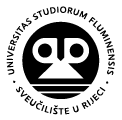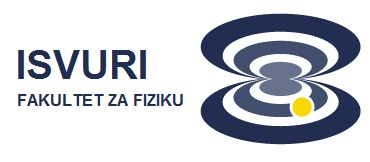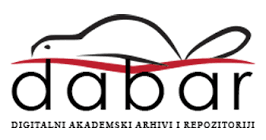Research
Scientific research includes various fields of theoretical and experimental physics, ranging from condensed matter physics, astrophysics, nuclear and molecular physics to elementary particle physics, environmental physics, and educational physics. Research is conducted through research projects supported by Croatian funding agencies or through international collaborations.
Scientific research in field of astrophysics is theoretical and observational. It includes investigation of atmosphere and circumstellar envelopes of various types of stars, search for extrasolar planets with gravitational microlensing method, and measurement of gamma radiation by detection of Čerenkov radiation.
Spectroscopic and photometric investigation of stars in various evolutionary phases is focused on circumstellar envelopes that consist of gas and dust. We determine their chemical composition, physical properties, structure, geometry and time development of relevant parameters. In order to analyze large amounts of observational data and to model complex stellar systems we apply existing and develop new computer programs (D. Kotnik-Karuza, T. Jurkić).
Within international collaboration PLANET/MicroFUN we use a network of optical telescopes to measure an increase in brightness of stars that results from gravitational microlensing. By comparing simulated and measured light curves we determine whether these stars are orbited by (extrasolar) planets or if they are binary star systems (D. Dominis Prester, K. Lončarić).
We investigate cataclysmic variable stars and young stellar objects with spectroscopic and photometric methods.
We study variations of helium lines of Sun's chromosphere and coronal holes observed in microwave spectral range. Properties of the solar velocity field are investigated in order to reveal the transfer of the angular momentum on the solar surface. We also study dependence of the solar differential rotation on time and on the phase of the solar cycle, as well as the relationship between solar rotation and activity (R. Jurdana-Šepić, I.Poljančić-Beljan).
Using Cherenkov telescopes MAGIC I and II located at Canary island La Palma (ORM) we observe scattering of gamma rays in Earth’s atmosphere. Through analysis of light curves and gamma radiation spectra we study physical phenomena in active galactic nuclei, as well as propagation of gamma rays through space (influence of extragalactic background light, gravity and space-time structure on gamma rays). Simultaneously, Cherenkov Telescope Array (CTA) - the next generation of Cherenkov telescope system is being built in ORM and Paranal (Chile). Using supercomputer Bura, we are performing Monte Carlo simulations and data analysis of the planed system in order to optimize its performance. Department of Physics of University of Rijeka is co-owner of MAGIC telescopes and accompanying experimental equipment (D. Dominis Prester, M. Manganaro, S. Mićanović and T. Terzić).
Scientific research in theoretical physics covers a wide range of phenomena from interactions of electromagnetic fields with surfaces and Compton scattering on atoms, to thermodynamics of black holes and unification of all forces.
Study of interaction of electromagnetic field with matter, especially with surfaces and particles near the surface and study of electrons and electron structure in systems with reduced symmetry is connected with better understanding of specific phenomena, like Casimir effect (Z. Lenac).
Research in elementary particle physics is conducted in two connected directions. One is dedicated to unification of forces, mostly in the framework of superstring theory. The other is focused on studying the properties of black holes. Besides growing importance in astrophysics, black holes also provide a unique theoretical laboratory for studying microscopic structure of space-time, i.e. quantum gravity which is yet unknown theory for which superstring theory is the beast candidate at present. This research is also important for understanding early stages of the Universe (Big Bang) and its future (M. Paulišić in collaboration with P. Dominis Prester from the Faculty of Mathematics).
We extended the study of Compton scattering on atom with independent particle model to double-ionised helium atoms with corrections from Coulomb and magnetic interaction. We also study scattering on two centres, for example scattering on positronium (Z. Kaliman).
Scientific and expert work in educational physics includes research of the development of physical concepts and interests for physics in children especially in children of young age, and development of educational modules for f2f environment and e-learning (R. Jurdana-Šepić, V. Labinac, N. Erceg).
Experimental research is focused on environmental physics, nuclear physics, condesed-matter physics and optics.
We study photophysical and photochemical reactions in aromatic molecules in condensed phase, their relaxation dynamics and energy transfer with Raman, micro-Raman and ultrafast spectroscopy with additional theoretical calculation of the structure and properties of excited states ( I.Jelovica Badovinac).
We use photoemission x-ray absorption synchrotron radiation electron microscopy to directly observe and characterize nitrogen defects in form of interstitial and substitution atoms or molecules and determine their role in properties of semiconductors. We complete experiments with theoretical simulations (M. Petravić, R.Peter, M.Varašanec).
With high-resolution optical resonant cavity we study the behaviour of light in presence of various media and boundary conditions. Measured quantities are usually small shifts of picometer size or smaller that provide information about interaction between light and matter. At the moment we are focused on optomechanics, a very active field of research because it allows manipulation of state and dynamics of nanomechanic resonators with light (M.Karuza).
Establishing new laboratories it is of great importance for experimental research at the Department. M. Petravić used funds from Ministry of Science and Croatian Science Foundation and I. Orlić funds from Croatian Science Foundation to establish two new laboratories. Laboratory for surface and materials physics (M. Petravić) purchased excellent XPS used for study of surfaces, impurities and defects on semiconductors, thin films and metals, as well as for study of interactions of these surfaces with energetic ions, electrons or atoms in gases. Laboratory for elemental microanalysis (I. Orlić) applies nuclear analytical techniques based on x-ray spectroscopy primarily in studies of samples that are important for environment protection but also archaeological samples and samples related to cultural heritage.
Contact
FACULTY OF PHYSICS
UNIVERSITY OF RIJEKA
Ulica Radmile Matejčić 2
51000 Rijeka
Tel.: +385 51 584 600
Fax: +385 51 584 649
Email: fizika@phy.uniri.hr














